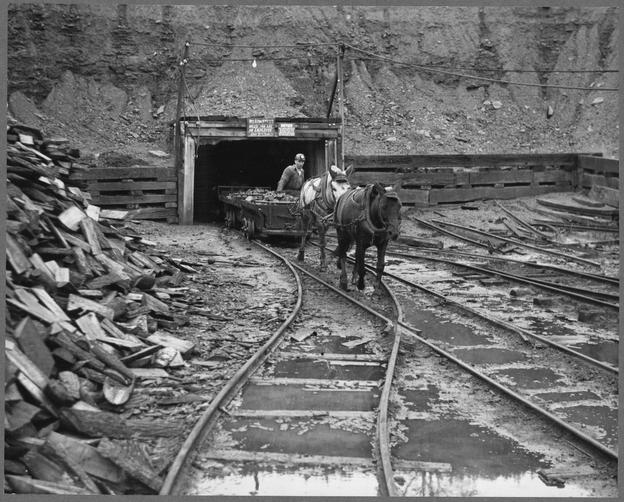You can read this exclusive content thanks to the FALATH & PARTNERS law firm, which assists American people with Slovak roots in obtaining Slovak citizenship and reconnecting them with the land of their ancestors.
December of 1907 was unusually deadly when it comes to mine disasters in the United States. Around 600 men and boys perished in several disasters that took place in the last month of the year that would become one of the most prosperous for the companies mining the black coal veins under Western Pennsylvania and West Virginia.
On December 6, the Monongah disaster in the latter state claimed 362 miners, becoming the worst in American history. With 239 dead, the Darr Mine disaster on December 19 added onto the count of lives lost.
It was very painful especially for the families of immigrants from Central Europe who comprised many of the victims, including Slovaks from the historic Gemer and Abov regions in southeastern Slovakia.
Accident waiting to happen
In the latter half of the 19th century, after the Civil War ended, the North experienced economic growth and industrialisation which meant that a growing number of factories, steelworks, and coal mines were constantly in need of cheap workers.
It was in this environment that Slovak emigrants - and from other countries as well - found themselves in upon arriving in the US. Many of them settled on the east coast, around cities such as Pittsburg and Philadelphia in Pennsylvania.
Coming from a rural background, Slovaks were neither skilled nor literate, meaning they were limited in the types of jobs they could find. They had to take the most dangerous jobs available - mainly in coal mines and steelworks. It was not unusual for them to arrive in the country one day and march into the mine the next.
Working conditions in mines were abysmal, safety conditions even worse: coal dust, poor ventilation, gas, open fire. They were accidents waiting to happen. The Darr Mine, operated by the Pittsburgh Coal Company and located in south-western Pennsylvania, was one such mine.
A cloud of dust and smoke instead of her husband
"The accident occurred about 11:30 on the morning of the 19th of December. Persons in the vicinity of the mine describe the explosion as an awful rumbling followed by a loud report and a concussion that shook the nearby buildings and was felt within a radius of several miles," reads a report on the disaster.
"At the same time there came out of the mouth of the mine an immense cloud of smoke and dust that floated across the Youghiogheny River," adds an account from the New York Times.
Only one man, pumper Joseph Mapleton, emerged from one of the side entries.
"I was near entry 21," said he, "when I heard an awful rumbling. I started toward the entry, but the next instant I was blinded, and for a little time I did not know anything. Then I got to the side entry and worked my way out."
The wife of the mine foreman, Mrs Campbell, said that around 11:30, "the dishes in my cupboard and on the table were rattled and knocked out of place, while the glass in the windows was shattered". Their home was located less than 50 metres away from the mouth of the mine. Her husband had told her before about the gas in the mine. He was due for his meal when the disaster happened.
"Instead of my husband I saw a great cloud of dust and smoke pouring out of the mouth of the mine through the manway. It floated upward and disappeared across the river," she added.
The New York Times story was written before it was clear that no one had survived the explosion.
Death toll could have been higher
Mrs Campbell's husband was one of the 239 victims. She herself became one of the 130 widows, left with 300 fatherless children; in total, 542 people were without income. Among the men and boys were miners from the then already closed Naomi mine which exploded on December 1, killing 34.
The list of the victims can be found here. Many names on it were Americanised, but it possible to at least guess who came from Central Europe. In addition to Slovaks, Hungarians, Rusyns, Austrians, Poles, Germans, Italians and of course Americans were among the victims. It took several days to recover the bodies.
The toll could have been much higher. Usually, about 400 miners worked at the Darr Mine. However, the Greek Catholic miners had stayed home to mark the Feast of St Nicholas.
It is presumed that an explosion occurred in an area of the mine that had been cordoned off, but miners entered it with open flame lamps.
After the disaster, the Pittsburgh Mining Company abandoned the use of such lamps. The company was not held responsible for the disaster.
Spectacular Slovakia travel guides
A helping hand in the heart of Europe thanks to the Slovakia travel guide with more than 1,000 photos and hundreds of tourist spots.
Our detailed travel guide to the Tatras introduces you to the whole region around the Tatra mountains, including attractions on the Polish side.
Lost in Bratislava? Impossible with our City Guide!
See some selected travel articles, podcasts, traveller info as well as other guides dedicated to Nitra, Trenčín Region, Trnava Region and Žilina Region.


 Illustrative image of miners working for the Pittsburg Coal Company. (source: WIKIMEDIA CC)
Illustrative image of miners working for the Pittsburg Coal Company. (source: WIKIMEDIA CC)
 Illustrative image of a mine portal with ponies. (source: WIKIMEDIA CC)
Illustrative image of a mine portal with ponies. (source: WIKIMEDIA CC)
 Terra Parna Winery (source: Courtesy of Trnava Región)
Terra Parna Winery (source: Courtesy of Trnava Región)